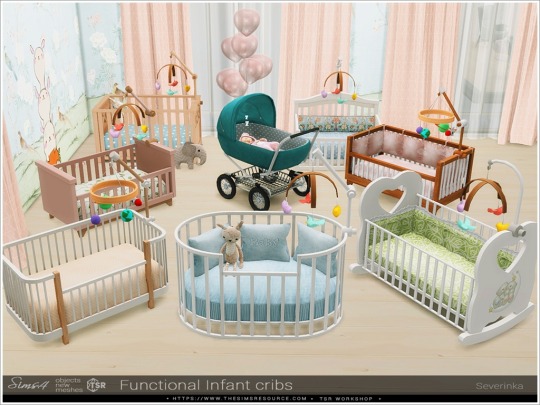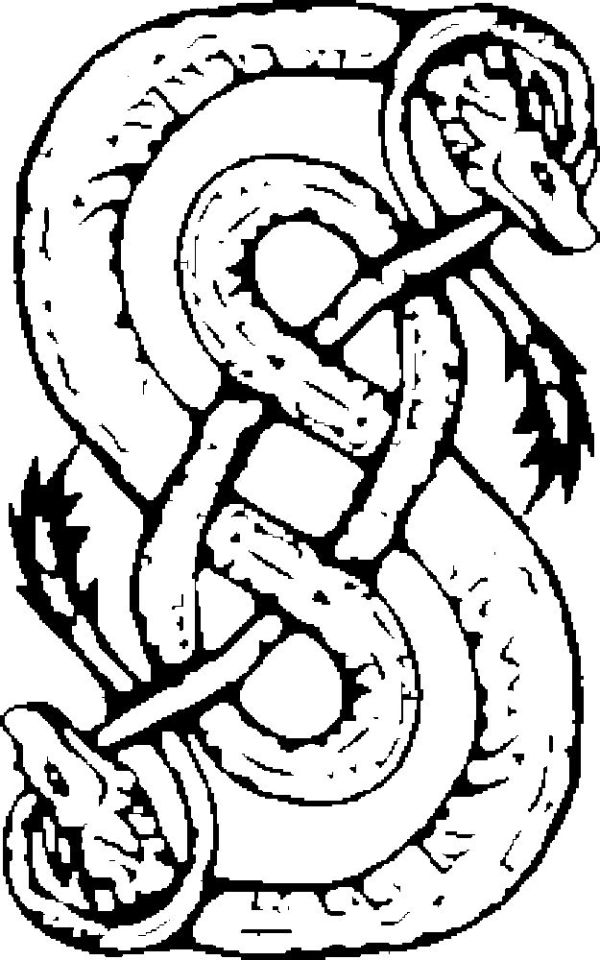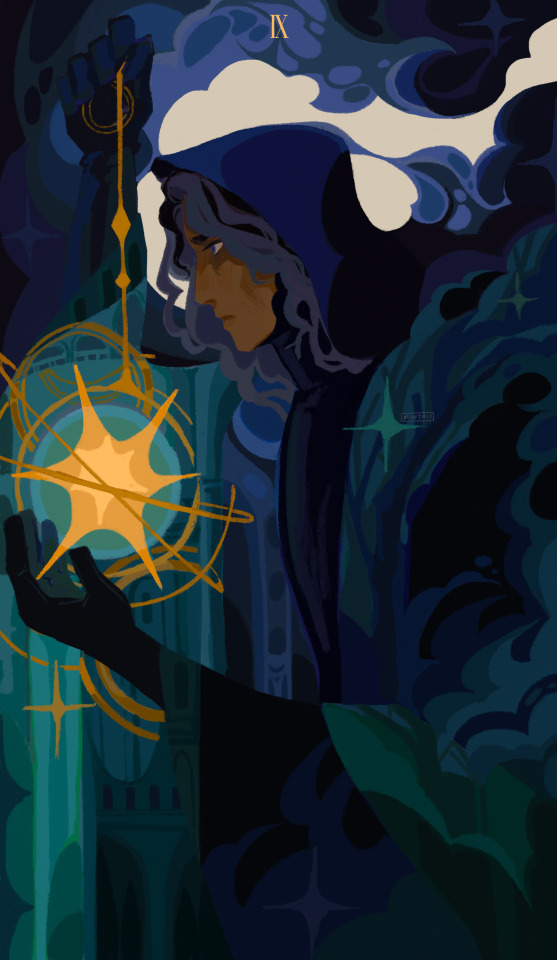Text



Functional Infant cribs
A set of cribs for infants for my previously released nursery's sets.
All cribs can be equipped with a functional mobile.
The set includes:
1 travel crib Stroller
You can put the in the luggage and put it on the street.
You can also put a baby in the stroller if you have the 'Invisible Crib mod'
8 addition cribs for kits: 'Evelina nursery', 'Heart kidsroom'
'Jenny nursery', 'Layra nursery', 'Lily nursery', 'Stephanie nursery', 'Victoria nursery'
DOWNLOAD TSR
3K notes
·
View notes
Text
SimsFinds (formerly SimsDom)
If you are visiting via SimsFinds: I want anyone visiting my Tumblr from the SimsFinds website to know that most of the creators you see linked there never gave their permission for a link to their CC to be put behind ads or timers, including myself.
Awhile back someone sent me an Ask, letting me know that some of my CC was linked on this site. While I was aware of it, at the time it was only a handful of my posts. Recently they have been adding a ton of links to my CC posts, all behind their stupid timers, and due to their past behavior I am saying something about this. Not to mention their site still looks like one of those potential virus minefield disasters that you tell your mother not to visit.
I want everyone to know that there are many CC finds blogs right here on Tumblr. You don’t need to use that site to find all of the fun CC you’re looking for. You can start by searching tags like #sims 4 cc, #ts4cc, #s4cc, and go from there.


What SimsFinds is doing, is trying to turn THIS into THIS (more about TSR HERE)
CC Finds blogs that I recommend can be found at the bottom of my CC posts, as well as my own CC finds blog, which I’ve spent a lot of time organizing <HERE>, & there are many, many CC finds blogs on Tumblr that you might come across yourself as well <3
If you are new to Tumblr & make an account to save things for later, remember to personalize your blog, write something in the description so that your blog doesn’t look like a bot account (you can read about that here)
Happy Simming!
*I noticed some people expressing that they feel bad for using this site, please don’t feel bad. The purpose of this post is to inform and help!
Free PNG image for other creators below the cut:
Keep reading
129 notes
·
View notes
Text
Loki understands rage about injustices. They understand the grief that comes, too. They understand that the Chaos that comes before the healing hurts. They know. They understand.
They will sit with you while you grieve. They will hold you while you heal.
716 notes
·
View notes
Text
Loki’s Correspondences

Deep within me, a long time ago, arose the need to do some research and create something concrete on this matter, what began as a means of finding reference quickly became a devotional act. So, this is a compilation of information and some of my insight about the deity and possible correspondences. Do feel free to disagree and also to hit me up with other information or your personal insight, these, albeit coming from a lot of research, may not be universal.
Keep reading
279 notes
·
View notes
Text
Norse Mythology
ig: @sunshine.writing
As with every culture, there are many different interpretations and I tried my best to use the most popular ones. There are also many different versions and spellings for the names of the gods and goddesses, but I used the anglicized and most popular spellings.
Aesir and Vanir
The Norse gods are divided into two families, the Aesir family, and the Vanir family. The Aesir family is the larger of the two and is mostly connected with war and government and includes the gods Odin, Thor, Loki, Baldr, Hodr, Heimdall, and Tyr. The Vanir family includes the fertility gods and goddesses such as Njord, Feyr, and Freyja. Both families reside in Asgard but don’t see eye-to-eye as shown through the Aesir-Vanir war.
Besides the Aesir and Vanir, there are also female deities known as Disir, Alfar (elves), Jotnar (giants), and Dvergar (dwarves).
Aesir Gods and Goddesses
Odin - Odin was the King of the Aesir clan and known as “the father of all gods.” He’s depicted as a one-eyed, bearded old man wearing a hat and a cloak. He was said to have slain the first being known as Ymir before carving up his body to help create the Earth. He was one of the most powerful and revered of the gods and associated with wisdom, knowledge, healing, death, and war. He also ruled over Valhalla.
Thor - Son of Odin, he was regarded as the strongest of all the Norse deities because he was tasked with safeguarding Asgard. He was the most popular of all the gods and worshipped by most Vikings. He was the god of thunder and lightning and wielded the Mjolnir. He rode a chariot drawn by two massive goats called Tanngnjostr and Tanngrisnir.
Loki - Loki was considered a “blood brother” of Odin. He was known as the trickster god and was equipped with the ability to shapeshift into different forms. He was the chief engineer behind the death of Balder.
Frigg - Frigg was the wife of Odin and the queen of the Aesir gods. She was the only one allowed to sit next to her husband and always stuck by her partner even though he had many extramarital affairs. She was worshipped as the goddess of the sky and associated with wisdom, marriage, family, and fertility. She was blessed with the power of divination but never revealed her visions to anyone.
Baldur - Son of Odin and half-brother to Thor, Baldur was the god of light and purity. He was described as fair, kind, and handsome, whose beauty was unparalleled. He was the epitome of all things wise and good and often praised for his mercifulness. Also thought to be immortal, he had been prophesied to die and was slain by an arrow made out of mistletoe, his death orchestrated by Loki.
Heimdall - Heimdall is the son of Odin and no less than nine mothers, and is the watchman of the god. He dwelt at the entry to Asgard where he guarded Bifrost.
Tyr - Tyr is the god of War and the Lawgiver of the gods. The bravest of the gods, he makes the binding of Fenrir possible by sacrificing his right hand. He’s the son of Odin and the son of the giant Hymir.
Idun - Idun is the goddess of spring or rejuvenation and is the wife of Bragi. She was the keeper of the magic apples of immortality which the gods must eat to preserve their youth.
Bragi - Bragi is the skaldic poet of the Aesir and his name means “poet”. He’s the son of Odin and possibly the giantess Gunnlod, and the husband to Idun.
Vili and Ve - Vili and Ve are the two brothers of Odin who helped to slay Ymir to create the remaining seven realms. They’re the sons of Bestla and Borr and were raised in the realm of Nifelheim.
Keep reading
223 notes
·
View notes
Text
Yule Toast
“Hail Odin, father of men, wise one, chooser of the slain, giver of runic knowledge: for wisdom and knowledge in the coming year, I ask of you. For victory and success in the coming year, I ask of you. Join us on this holy night as our guest; take drink and food, and be welcomed.”
“Hail Njord, lord of the sea, bringer of winds, lord of fishers and wealth: for prosperity and luck in the coming year, I ask of you. For safe journey of the physical and spiritual realm in the coming year, I ask of you. Join us on this holy night as our guest; take drink and food, and be welcomed.”
“Hail Freyr, the prosperous, lord of fair weather and bountiful harvest, bringer of peace: For prosperity and joy, and laughter and sun in the coming year, I ask of you. For peaceful times and little strife in the coming year, I ask of you. Join us on this holy night as our guest; take drink and food, and be welcomed.”
“Hail the spirits of the land, hail the spirits of the home, and others who may reside in our space: for friendship and reciprocity in the coming year, I offer to you, and ask of you. Join us on this holy night as our guests; take drink and food, and be welcomed.”
“Hail our ancestors, those who came before, those who watch over us, those in memory and those forgotten to time: stay with me in the coming year, for guidance and for companionship and for kinship. Join us on this holy night as our guests; take drink and food, and be welcomed."
174 notes
·
View notes
Text
Norse Deities
These are basic notes to look at as a beginning, there are only 10 deities from the website I used and I want to make sure my sources are good, so any feedback with corrections or additions you think I should add to it are greatly appreciated :)
***And remember, the Marvel universe versions of some of these gods are not entirely accurate and you should not base your entire knowledge of them off of Marvel
Baldur, God of Light
Associated with resurrection
Connected to the cycle of death and rebirth
Items for Honoring/Symbols:
Freyja, Goddess of Abundance and Fertility
Could be called upon for assistance in childbirth and conception, as an aid to you for marital problems or to bestow fruitfulness to the land or sea
She is also considered a goddess of wealth, war and battle, and has connections to magic and divination
Can be called upon in situations like domestic abuse
Items for Honoring/Symbols: honey, chocolate, and other aphrodisiacs/ “sexy foods” are good offerings, song, prayer, and poems in her honor
Heimdall, Protector of Asgard
God of light, keeper of the Bifrost Bridge, the path between Asgard and Midgard
Guardian of the gods
At Ragnarok, the end of the world, Heimdall will sound the horn to alert everyone and is destined to fall last at Ragnarok
Items for Honoring/Symbols:
Frigga, Goddess of Marriage and Prophecy
Wife of Odin
Had the gift of prophecy and portrayed weaving the future of men and gods, but cannot change their destiny
Credited with the development of runes
Items for Honoring/Symbols:
Hel, Goddess of the Underworld
Sent by Odin to Helheim/Niflheim to watch preside over the spirits of the dead, except those who died in battle and went to Valhalla
She determined the fate of those who entered her realm
Daughter of Loki
Items for Honoring/Symbols:
Loki, the Trickster
Generally described as a member of Odin’s family
Little evidence that shows Loki had a following
Main job was to mess with the other gods, men, and world
Loki would meddle with the affairs of others by shapeshifting into animals or as a person
Just because he has been popularized again by Tom Hiddleston’s Loki in Avengers does not mean you should call upon him today, if you invite him into your life he might not leave until he wants to and will cause mischief for his own amusement
Njord, God of the Sea
Married to Skadi, the goddess of the mountains
Items for Honoring/Symbols:
Odin, Ruler of the Gods
A shapeshifter who frequently roamed the earth in disguise
Often manifested as an old one-eyed man and would be a bringer of wisdom and knowledge to warriors
Typically accompanied by a pack of wolves or ravens and would ride on his magical horse named Sleipnir
Items for Honoring/Symbols:
Thor, the God of Thunder
Keeper of thunder and lightning and considered integral in agriculture
The link provided on the source website doesn’t lead to more info on Thor
Items for Honoring/Symbols: Mjolnir, his hammer
Tyr, the Warrior God
God of one-to-one combat
A warrior and god of heroic victory and triumph
Portrayed with one hand because he placed his hand in the mouth of Fenrir the wolf
Items for Honoring/Symbols:
Source: https://www.learnreligions.com/norse-deities-4590158 and any other links used for individual gods
32 notes
·
View notes
Text
Runes for beginners: introduction
In this grimoire I'm going to go through runes and their meaning in a way that is accessible to everyone. I'm gonna make a post for every rune so it's gonna be a long serie. I hope you will find this useful and if there's something unclear or wrong, please let me know!
I decided to avoid runes magic because I just want to help to get to know the runes a little better. Before practicing magic, you have to understand what this powerful tool is.
Introduction
Runes are not only a writing system, but they were also used as a magical, divinatory and spiritual growth tool. Rune (norse: rún/rúnar) means "segret, mistery". The characters used to engrave the rune, symbol of a certain energy in this world, were called runstafas (runic sticks).
They are an oracle and we can ask them to guide us: they work better if our question is specific and detailed. The lecture of Runes sometimes is obscure: the petitioner must interpret the details and understand them. Runes give us a way to analize the path we are on and to understand one of his possible outcomes: the future isn't static, we can change it with everything we do.
each rune has a phonetic value and a name that identifies its function and meaning; then it has a very specific history behind it and is associated with a diety.
Historical origins
I'm not gonna say much about the historical origins of the Runes because there are so many different theories about them and we could write an entire book just about this topic.
This is what you have to know:
the ancient futhark comes from the alphabet used by the Celts of Lugano (leoponzi) which has Greek origin. The Greek alphabet would have been absorbed by the Etruscans in the 12th century BC. and then by the Celts of Lugano in the VII. From here, thanks to trade, it would have arrived in the far north, with the necessary changes.
The Greek alphabet influenced the Gothic one and then the Germanic peoples adapted it (we can see how the Gothic alphabet is actually similar to both Greek and Runic, then the Othala rune resembles the Greek Omega).
it originated from the Roman alphabet, given the many relationships that different peoples entertained.
Mythological origin
"I know that I hung
On the wind-blasted tree
All of nights nine,
Pierced by my spear
And given to Odin,
Myself sacrificed to myself
On that pole
Of which none know
Where its roots run.
No aid I received,
Not even a sip from the horn.
Peering down,
I took up the runes –
Screaming I grasped them –
Then I fell back from there."
from the Old Norse poem Hávamál.
In Norse mythology, it's Odin who brought the Runes to the other gods. He wanted to know everything and he was envy of the Norns, who already knew them. He went to the Well of urd, the home of Runes, and since they reveal themselves to any but those who prove themselves worthy of such fearful insights and abilities, Odin hung himself from a branch of Yggdrasil, pierced himself with his spear, and peered downward into the waters below. He forbade any of the other gods to grant him the slightest aid. He survived in this state, teetering on the precipice that separates the living from the dead, for no less than nine days and nights. At the end of the ninth night, he at last perceived shapes in the depths: the runes. He's also lost his eyes for the wisdom.
Other important concepts
First of all, to truly understand how runes were used, you have to know at least a little of Norse mythology (I will tell you some books and links in the last paragraph). Then you have to understand what Orlog and Wyrd mean.
Orlog
This is basically karma but without reincarnation. Every person is born completely responsible for everything they do in their life since the first second: positive actions bring positive results, bad actions bring bad results, even in the afterlife. Who did positive things will go to Valhalla (where the heroes and the people who died in battle go) or to Sessrumnir (the halls of Freya). Who doesn't die in an honorable way or who did bad thing will go to Helheimr (the realm of Hel, this means that even who died in a normal way and who had a normal life will go there) or to Nilfheimr (the world of ice and cold, where the Ice Giants live).
Basically we decide where we are going with every choice we make.
Wyrd
A giant cobweb that extends in space and time: each thread is made up of a different manifestation of energy and all together it constitutes the very fabric of the universe. Since we are born, we are in some part of this web so we are also part of it.

Wyrd and Orlog are intertwined: who does good things and has a good Orlog, he will be on a good thread of the web. Wyrd is the fabric of life as well, so the world will be influenced by the positive energy of the man and will give him back this energy.
If each strand is a different manifestation of energy, each type of energy must have a name: the runes. In runic divination, what we see is a reflection of the energies in and around us (or around the person we are divining for). When we want to modify the Orlog, the process is different: we use the Runes as a channel for the energies that we need. We can say that the practice related to the runes is of two types: passive (divination) and active (healing, protection, etc ...).
Aettir of Runes
In the ancient futhark, there are 24 runes divided in three aettir (sing. aett, sets) of 8 runes each. Every aett is dedicated to a different diety:
Aett of Freya. She is of the Vani lineage and is therefore linked to fertility and harvest. She was welcomed with her twin brother Freyr in Asgard at the end of the war between the Aesir and the Vanir (basically the "wae" between the Norse people and the invaders). She can use the Runes, so she's a goddess of magic but also of love, associated with death (she is the leader of the Valkyries) and sexuality. The runes in this aett are: ᚠ ᚢ ᚦ ᚨ ᚱ ᚲ ᚷ ᚹ.
Aett of Heimdall. Of the Aesir lineage, he is among other things the guardian god of Bifrost and Asgard: he has hearing and sight that reach everywhere. Following a spell of Odin, he was born of nine waves and for this reason he is called "son of the wave". The runes in this aett are: ᚺ ᚾ ᛁ ᛃ ᛇ ᛈ ᛉ ᛊ.
Aett of Tyr. Of the Aesir lineage, he is known as the "Father of Heaven". He sacrificed one of his hands to be able to bind Fenrir and is a god linked to justice, loyalty, heaven, defense, war and law. The runes in this aett are: ᛏ ᛒ ᛖ ᛗ ᛚ ᛜ ᛞ ᛟ.
Last things
Ok so for this first post it's everything! I will continue in the next posts to explore every single rune. I just wanted to suggest some links and books if you want to go deeper into the fascinating history of runes.
Here you can find an interesting article about everything I just said, with so many references and here they also give a list of good books (if you can't afford them you can download their pdf from this site)
Anyway if you want to dig into norse mythology you can read:
Poetic Edda
Prose Edda
Norse Mythology by Neil Gaiman
Norse Mythology: A Guide to the Gods, Heroes, Rituals, and Beliefs by John Lindow
(other good books can be found here).
And of course, if you still didn't realize this, I fricking love the website Norse Mythology for Smart People, even tho everything I wrote in this post is from "Le Rune" by Marco Massignan (I couldn't find the English Translation sorry).
46 notes
·
View notes
Text
#3389
Oh winged ladies,
Oh Odin’s daughters,
Warriors now decease
In the red battlefield.
Friends or adversaries,
See who will come
To all the grand glories
In the hall of Valhalla.
4 notes
·
View notes
Note
How does cursing someone fit at all with the "harm none" rule? Even if no physical harm is caused, I've had depression and I wouldn't wish that on my worst enemy. How could laying a curse be compatible with compassionate witchcraft? -New to This
Hey anon! Thanks for the question
On the whole, cursing doesn’t really fit with the ‘harm none’ rule, just by the nature of what ‘harm none’ means. However, when done for the proper reasons, the target of the curse has already caused harm themselves. From my experience, quite a few witches who do follow the ‘harm none’ rule still cast curses by using this understanding as their basis. Since their target has already caused harm, they are balancing the ledger, so to speak.
Furthermore, many curses are cast on targets and in cases where harm is expected to be done again. If you expect harm to be done again and you are taking measures to prevent that, then a curse could still fit with the ‘harm none’ rule - if you bend it a little. It really, really all depends on how strict you are when it comes to following that rule; and remember, the “harm none” rule is, to the best of my understanding, primarily a Wiccan rule. There are very many witches who only use it as a base guideline, or don’t adhere to it at all!
As far as curses vs compassionate witchery…that is also a personal decision at the end of the day, because you’re right - both could theoretically work. However, that entirely depends on both your own beliefs, as well as your emotions and mental state. If you’re seething with anger, then a compassionate spell may not work right to begin with. And when done right, a good curse can still be more of an angry wake-up slap, which is sometimes what is needed; not everybody is responsive to compassionate energies.
Which brings us to the ‘like brings like’ concept. If the intended target of a curse has caused harm and is sending out negativity, then any positivity that you send them might night even make it through. However, a curse will just flow right along, because it’s sent with the same intent that the target is radiating - negativity. In the end, it may be the only way to get a message through to a target, and it will probably help significantly with the healing process of the curse caster.
I hope this helps a bit to answer your question, anon! ^_^
16 notes
·
View notes
Text
Tea Magick
Tea (in general) - courage, mental powers, prosperity, restfulness, strength
+White tea - air magick, purification, protection, clarity, realization, meditation, cleansing
+Green tea- fire magick, healing, love, catalysts, mindfulness, passion, sexual health and new energies
+Black tea - strength, stability, endings, finished business, banishment, expelling negativity
+Oolong tea - water magick, wisdom, reflection and deep concentration, beauty and emotional connections
+Chamomile - banishment, love, purification, sleep and wealth+
+Rose - divination, fortune, healing, love, protection and psychic abilities
+Hibiscus- divination, love and lust
+Jasmine - love and wealth
+Mint - exorcism, healing, love, lust, protection, and wealth
Extra ingredients for more power
-Honey: happiness, healing, love, lust, purification, spirituality, sweet things in life, wisdom (bonus if your honey is infused with certain herbs ie lavender honey, eucalyptus honey, wildflower honey, etc)
-Sugar: love Milk(non dairy included): Goddess energy, love, nurturing, spirituality, sustenance, energy
Stirring your tea Clockwise: to add in positive energies
Counter clockwise: to remove negative energies
81 notes
·
View notes
Text
Motivation Potion

A potion for when you need some extra motivation.
Ingredients
Sun water
Orange peel
Jasmine tea
Lemon(or lemon juice)
137 notes
·
View notes
Text
✨Looking for witchy friends!✨
Hey I'm Rye! Please like or reblog this if you are a
Storm witch
Cosmic witch
Spiritworker
Fae witch
Queer witch
Buddhist or buddhist witch
Druid
Or if you blog about
Tea magick
Dream magick
Tarot
Witch tips
Vulture culture
Goddess Iris
Goddess Rhiannon
Goddess Bast
Goddess Hecate
Looking forward to meeting you! 18+ please. I don't want to interact with minors. Please respect my boundaries.
262 notes
·
View notes



